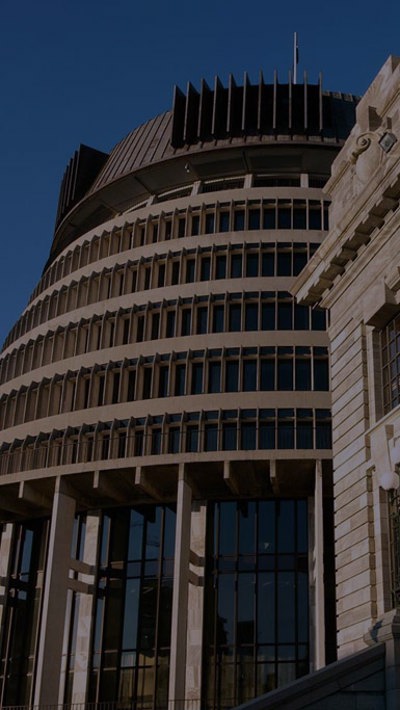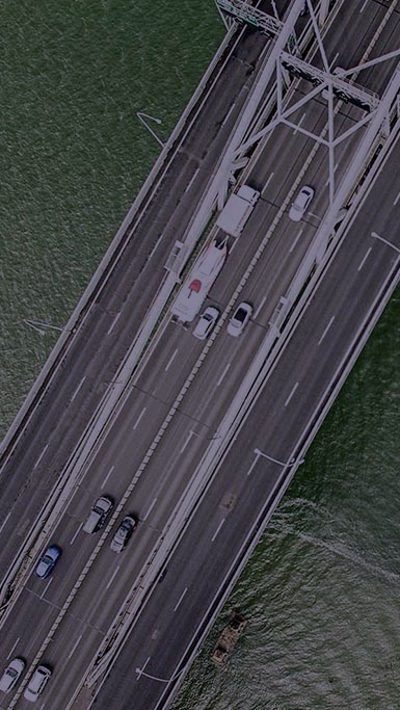Contents
Territorial authorities are highly exposed to climate change risk both through their statutory role as the branch of government responsible for implementing much of the response and as the owners of large amounts of at-risk infrastructure.
This will place a huge burden on already strained resources and could make for a bumpy and difficult transition. We look at some of the factors which will be driving local government decisions and how councils and business can best position themselves to manage climate change mitigation and adaptation.
This is the third instalment in our Building resilience to climate change series. The previous two instalments covered insurance and governance.
The missing link in the current framework
New Zealand’s climate change performance so far is longer on words than action. Part of the reason for this is that much of the statutory responsibility1 sits with local councils, but they need central government direction, guidance and support to protect them from legal challenges and liability claims – and this has been inconsistent and, in many areas, absent.
The Climate Change Response (Zero Carbon) Amendment Bill (Zero Carbon Bill) will begin to turn this around by mandating the provision of detailed information through a National Climate Change Risk Assessment every six years supported by National Adaptation Plans with progress reports every two years and new reporting obligations on the public and private sector providers of lifeline utility functions2.
We will have a clearer idea of the Bill’s final shape when it is reported back to the House on 21 October 2019, although there will still be scope for further legislative changes through Supplementary Order Papers and it is likely that some issues of definition and interpretation will be resolved post-enactment by the courts.
Local Government New Zealand (LGNZ) Executive Director Malcolm Alexander made this point to the select committee considering the Bill, saying “either Parliament sets the [risk allocation] framework, or we let the Supreme Court do it.”
The illustration he used to reinforce his argument was Kāpiti Coast District Council’s attempt in 2012 to place sea level rise projections in its Proposed District Plan and on Land Information Memoranda (LIM) for 1,800 potentially affected properties. This has sparked several rounds of litigation and is still unresolved.
The Council removed the projection lines from the LIMs, instead inserting “precautionary wording” agreed between the parties but, seven years later, is still trying to find a watertight settlement. Meanwhile, the coastal hazard planning continues to be managed through the provisions of the Operative District Plan 1999.
Whakatane District Council is running into similar issues in its efforts to achieve a voluntary managed retreat from the Matatā settlement on the Awatariki fanhead, which is at high risk of flood and debris flow. It has red-zoned the area, rendering the properties there uninsurable, and has prohibited new construction.
The property owners have been offered compensation based on market prices, with $5m funding support from both the Bay of Plenty Regional Council and the Government, which Local Government Minister Nanaia Mahuta has described as “a just and enduring solution”. But many residents don’t want to leave and are talking of legal action.
Meanwhile Thames Coromandel District Council is facing a judicial review challenge for its decision not to sign the Local Government Leader’s Climate Change Declaration.
Key risk areas
The risks for local government arising from climate change adaptation and mitigation are panoramic in scale. They extend beyond sea level rise and flooding to extreme weather events such as drought and storm and to the pest and health effects associated with higher temperatures – all of which will need to be anticipated and managed at the local level.
The legal exposure is also large; running from challenges to the accuracy of the data councils use, the actions they take based on that information, or a failure to act – e.g., allowing development in locations which are at risk of climate change effects, or not maintaining the provision of essential infrastructure and services.
Aware of this, many councils are well-advanced in their climate change risk and vulnerability modelling. They have the benefit of some central government guidance in relation to sea level rise3, and work is underway on New Zealand’s first National Climate Change Risk Assessment. But until this is completed, and the Zero Carbon Bill is fully implemented, each council is pretty much plotting its own course.
The result is a lack of consistency across the country in terminology, methodology and approach, and even in which arm of council is responsible for leading the strategy. This means that the adaptation planning in the Zero Carbon Bill will land in knotty and difficult terrain – creating uncertainty for businesses and households, and increased expenditure and legal jeopardy for councils as they seek to align their plans with their statutory obligations and with the detail of the inaugural National Adaptation Plan.
All care, all responsibility
Compounding these problems is the burden on council capacity created by the fact that much of its own infrastructure is at risk – up to $5.1b across the combined estate, based on a one metre sea level rise4, according to LGNZ estimates.
And this does not take into account population effects or the full range of climate change related hazards beyond sea level rise. Productivity Commission projections over the next 30 years have 28 urban areas in New Zealand experiencing population growth of 20% or more and 61 experiencing depopulation.
High growth councils will have to install new infrastructure to accommodate their growing populations in addition to the costs generated by the need to replace or relocate assets placed at risk from climate change or unsupportable due to limited insurance cover.
Councils with low or negative population growth will need to fund their infrastructure relocation or replacement expenditure off a static or declining ratings base.
The relationship between central and local government has always been problematic and – from local government’s perspective – often unequal, unsatisfactory and unfair.
Central government has a long history of loading new functions on to local government – e.g., through National Policy Statements, National Environmental Standards and Treaty of Waitangi settlements – without providing any additional funding to meet the associated costs.
The Beehive has always been conspicuously reluctant to agree to new funding sources for local government, especially if the money would come out of its own pocket. The rejection of the Productivity Commission’s 2015 recommendation that the rating exemption applying to Crown land be removed, and the failure of LGNZ’s repeated requests that local government should get a share of the GST spent within their territory are examples of this tendency in action.
Productivity Commission
The Productivity Commission is wrestling with these issues in its Local government funding and financing inquiry, currently underway.
Proposals include:
- providing a funding stream from central to local government based on new building work within the authority’s territorial boundaries. This could be calculated on the value of building consents or on new construction measured by floor area
- strengthening the local government-central government interface by establishing a “Partners in Regulation” protocol which would set out an agreed set of behaviours and expectations when developing legislation or regulation, and
in relation to infrastructure;
- extending assistance through the NZ Transport Agency to councils facing significant threats to the viability of local roads and bridges
- creating a climate-resilience agency and associated fund to help at-risk councils redesign and possibly relocate and rebuild wastewater, storm water and flood protection infrastructure threatened by climate change, and
- establishing a new regulatory regime (possibly administered by the Commerce Commission) which could forcibly merge water services in the event of council failure and place them under a Council Controlled Organisation structure, with funding on a fully user-pays basis rather than through rates.
The fate of these recommendations will lie with the Government. It would reduce the risk of catastrophic failure and provide more confidence all round if at least some of them were implemented but we have to accept that there is a real possibility that the acceptance rate may be very small.
Even assuming this does happen, however, there are tools already available to councils which they could make better use of, such as targeted rates and user-charges. Councils may also have to bite the bullet on general rates increases. It would be hard to find in the current local government elections a race in which no candidate is promising a rates freeze. Even if this is feasible now, it will not be once councils begin to incur climate change related expenditure.
Risk minimisation strategies for councils
Councils can best position themselves to make defensible decisions concerning climate change risk and resilience through employing the following strategies.
- Working with LGNZ, other councils and central government (including the Ministry for the Environment and the National Climate Change Risk Assessment Panel) to develop consistent methodologies in relation to risk modelling and planning responses.
- Identify key stakeholders to try to get their buy-in to modelling and risk identification work early on, and ensure meaningful consultation on the process.
- Keeping to an absolute minimum the number of internal risk assessments and models that do not follow through into specific planning outcomes.
- Being prepared for information requests from interested ratepayer groups and Non-Government Organisations (NGOs) and for potential litigation triggered from climate change related events or alleged unreasonable inaction.
Risk minimisation strategies for business
Business needs to recognise the large responsibility that local government will carry in the implementation of New Zealand’s climate change response at grass roots level and the capacity constraints which could frustrate that effort, particularly for smaller councils in areas of declining population.
This means:
- investing in your relationships with your councils – both elected members and officials
- being aware of your business’s reliance on assets, services and infrastructure that may be at risk of climate change disruption and attempting to anticipate adaptation costs (for businesses with property or infrastructure portfolios, particularly lifeline utility providers, this may involve internal climate risk assessments)
- where possible, participating in consultation on risk modelling and adaptation planning exercises that may apportion new user charges or rating burdens
- considering whether to divest assets with material climate change risks that could be rendered uninsurable or stranded as a result of Council risk identification or attract higher costs through targeted rates or additional user charges, and
- investigating the possibility of partnership arrangements – these could range from simple roundtable discussions on matters of interest to full-blown public/private partnerships, advice for which is available through the Infrastructure Transactions Unit.
1 Local and regional councils have a statutory planning and infrastructure/service provider roles under the Resource Management Act 1991 and the Local Government Act 2002.
2 Lifeline utilities include airports, ports, rail, electricity generation, sewerage systems, telecommunications, roads, natural gas, water, petroleum
3 The Ministry for the Environment 2017 guidance on Dynamic Adaptive Pathway Planning
4 LGNZ media release






































































































